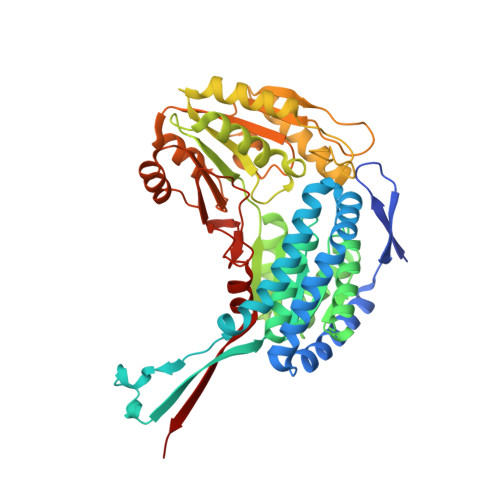Crystal structure of thermostable acetaldehyde dehydrogenase from the hyperthermophilic archaeon Sulfolobus tokodaii.
Mine, S., Nakabayashi, M., Ishikawa, K.(2023) Acta Crystallogr F Struct Biol Commun 79: 159-165
- PubMed: 37227376
- DOI: https://doi.org/10.1107/S2053230X23004430
- Primary Citation of Related Structures:
8HAP - PubMed Abstract:
Aldehyde dehydrogenase (ALDH) is widely distributed in nature and its characteristics have been examined. ALDH plays an important role in aldehyde detoxification. Sources of aldehydes include incomplete combustion and emissions from paints, linoleum and varnishes in the living environment. Acetaldehyde is also considered to be carcinogenic and toxic. Thermostable ALDH from the hyperthermophilic archaeon Sulfolobus tokodaii exhibits high activity towards acetaldehyde and has potential applications as a biosensor for acetaldehyde. Thermostable ALDH displays a unique and wide adaptability. Therefore, its crystal structure can provide new insights into the catalytic mechanism and potential applications of ALDHs. However, a crystal structure of a thermostable ALDH exhibiting high activity towards acetaldehyde has not been reported to date. In this study, crystals of recombinant thermostable ALDH from S. tokodaii were prepared and the crystal structure of its holo form was determined. A crystal of the enzyme was prepared and its structure in complex with NADP was determined at a resolution of 2.2 Å. This structural analysis may facilitate further studies on catalytic mechanisms and applications.
- Biomedical Research Institute, National Institute of Advanced Industrial Science and Technology (AIST), 1-8-31 Midorigaoka, Ikeda, Osaka 563-8577, Japan.
Organizational Affiliation:



















